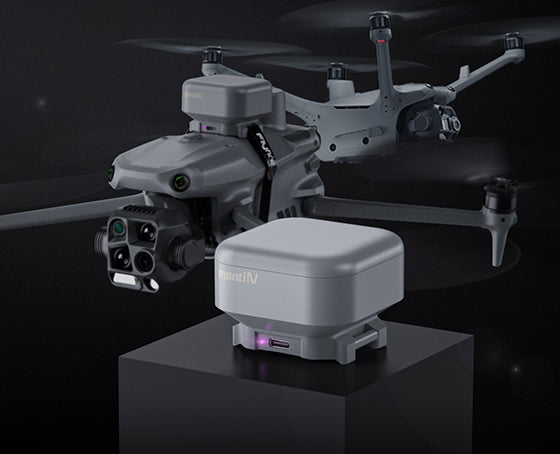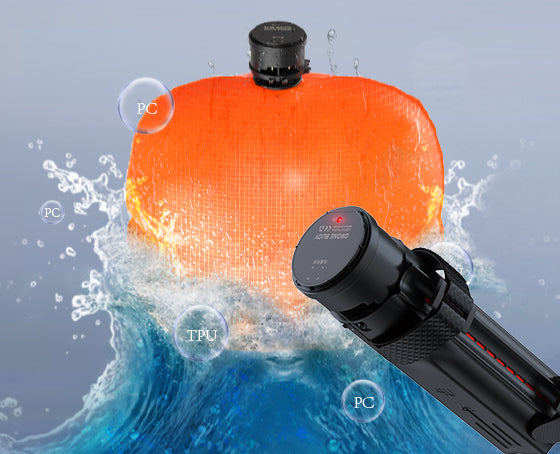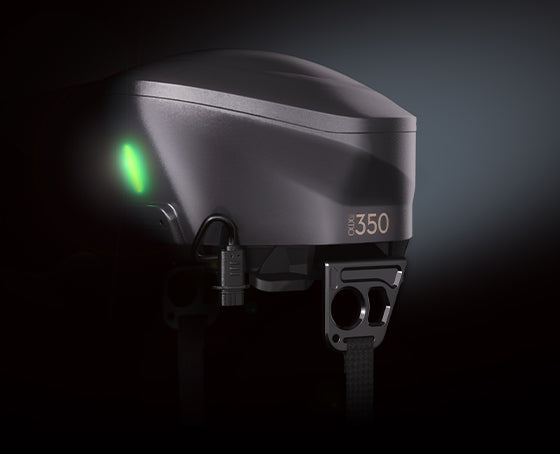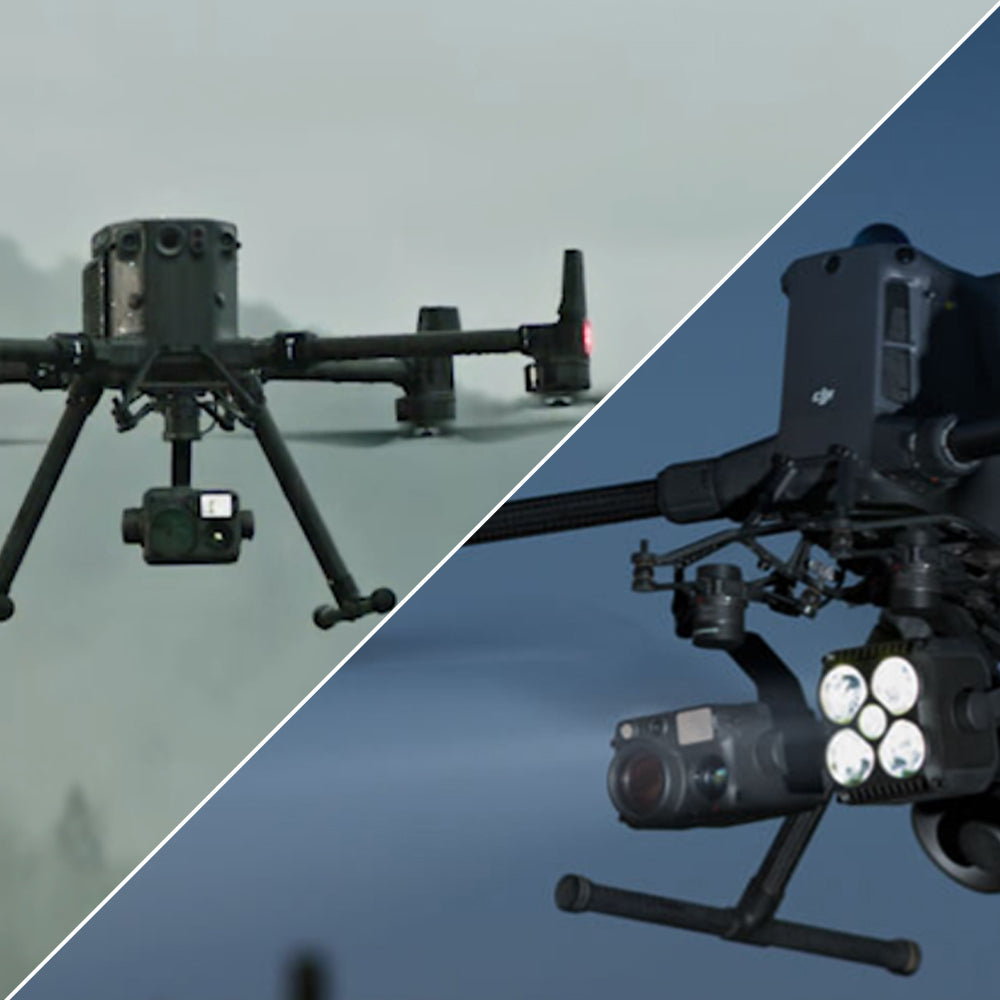In the field of industrial drones, DJI's Matrice series has always been synonymous with efficiency and reliability. The Matrice 350 RTK (M350 RTK) released in 2023 and the Matrice 400 (M400) launched in 2025 represent the technological pinnacles of different generations.
Shortly after DJI released the Matrice 350 RTK, flyfire released the OWL-M350 parachute. Flyfire is committed to the research and development of passive safety protection solutions for drones, and the concept of solving the risks after drone accidents through passive safety equipment. Following in DJI's footsteps, flyfire helps pilots solve flight safety risks.

- 55 minutes of ultra-long flight time (measured in an empty and windless environment), supports flight at an altitude of 7,000 meters (plateau propellers required)
- Wind resistance up to 12 m/s, suitable for extreme environments from -20℃ to 50℃
- Maximum flight speed 23 m/s, vertical speed 6 m/s (ascending) / 7 m/s (inclining descent)

- The battery life is further improved to 59 minutes (no load and no wind), and it also supports an altitude of 7,000 meters.
- Adopt 2510F propellers, and the non-coplanar design of the front and rear propellers improves power efficiency and control stability

Summary: The M400 has a slightly better battery life, but the M350 RTK is more balanced in speed and wind resistance, and their adaptability to plateaus is the same.
.
- IP55 protection (unfolded), six-way binocular vision + infrared perception, support for millimeter-wave radar expansion
- Redundant design + arm in place detection to avoid the risk of installation errors
- Both are IP55 protected, but the sensor system is more luxurious
- Circular scanning laser radar + upper laser radar + six-way millimeter wave radar
- Wire-level obstacle avoidance capability: Can avoid cables with a diameter of 21.6 mm at a speed of 25 m/s
Summary: The M400 has a more comprehensive perception hardware configuration, which is especially suitable for high-risk scenarios such as power inspections; the M350 RTK relies on expansion to achieve similar capabilities.

- TB65 dual battery system, supports 400 cycles of charging, hot swap design enables multiple flights without interruption
- BS65 Smart Battery Box: Charge 2 TB65+1 WB37 at the same time, fast charge in 30 minutes (220V) from 20% to 90%
- Using TB100 single battery, fast charging 45 minutes to fully charge (220V)
- Support power-off endurance: Replace the battery within 45 seconds and restart quickly
Summary: The M350 RTK battery ecosystem is more flexible and suitable for long-term inspections; the M400 single-battery fast charging advantage is obvious and suitable for high-frequency tasks

- Maximum load: 2.7 kg, supports three-load coordination (single/dual gimbals at the bottom and gimbals at the top)
- Compatible with Zenmuse H20 series, P1, L1 and other loads, E-Port interface open to third-party development
- Load-carrying king: The third gimbal supports 6 kg, with a total load interface of up to 7 (via expansion board)
- Compatible with high-end loads such as H30T, L2, P1, etc., and supports airborne relay (providing signal transfer for another M400)
Summary: M400 is the ultimate choice for heavy-load missions, while M350 RTK focuses more on multi-load coordination and ecological compatibility.

- O3 Image Transmission Industry Edition, 20km ultra-long transmission (FCC standard), supports 4G enhanced image transmission and anti-blocking
- DJI RC Plus remote controller: 7-inch high-brightness screen, 6 hours of battery life (with WB37 battery), dual control mode
- Upgraded to O4 industry enhanced version, supporting aerial image transmission relay
- Equipped with DJI RC Plus 2 enhanced remote controller, sub2G image transmission module can be installed to improve anti-interference
Summary: The M400 image transmission technology is updated, and the relay function is suitable for complex terrain; the M350 RTK's 4G collaborative solution is more cost-effective.
.
Surveying and mapping (terrain-like flight + intelligent swing shooting), security (nighttime dot positioning + cloud-based mapping), power inspection (precise re-shooting)
Large-scale infrastructure inspection (heavy-load LiDAR), maritime monitoring (take-off and landing on board to support dynamic ships), multi-aircraft formation operation (relay function)
.
Parameter comparison summary

Final selection advice
- Choose M350 RTK if: you want high cost performance, need to frequently replace batteries (such as long patrols), and are compatible with existing Zenmuse payloads
- Choose M400 if: You need to carry heavy equipment such as LiDAR, operate in a complex signal environment that requires relay, or take off and land on dynamic platforms such as ships

(flyfiretech.com >>Learn More)
The deep integration of Flyfire parachute and DJI system is essentially to redefine the safety boundary with an open ecosystem - it not only continues DJI's gene of "technology protecting flight", but also supplements users' safety anxieties with hardware innovation, achieving a win-win situation of commercial value and brand trust.








